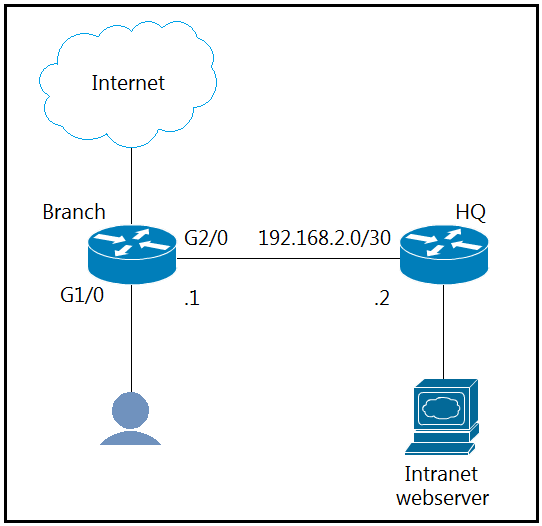
Refer to the exhibit. The branch router is configured with a default route toward the Internet and has no routes configured for the HQ site that is connected through interface G2/0. The HQ router is fully configured and does not require changes.
Which configuration on the branch router makes the intranet website (TCP port 80) available to the branch office users?